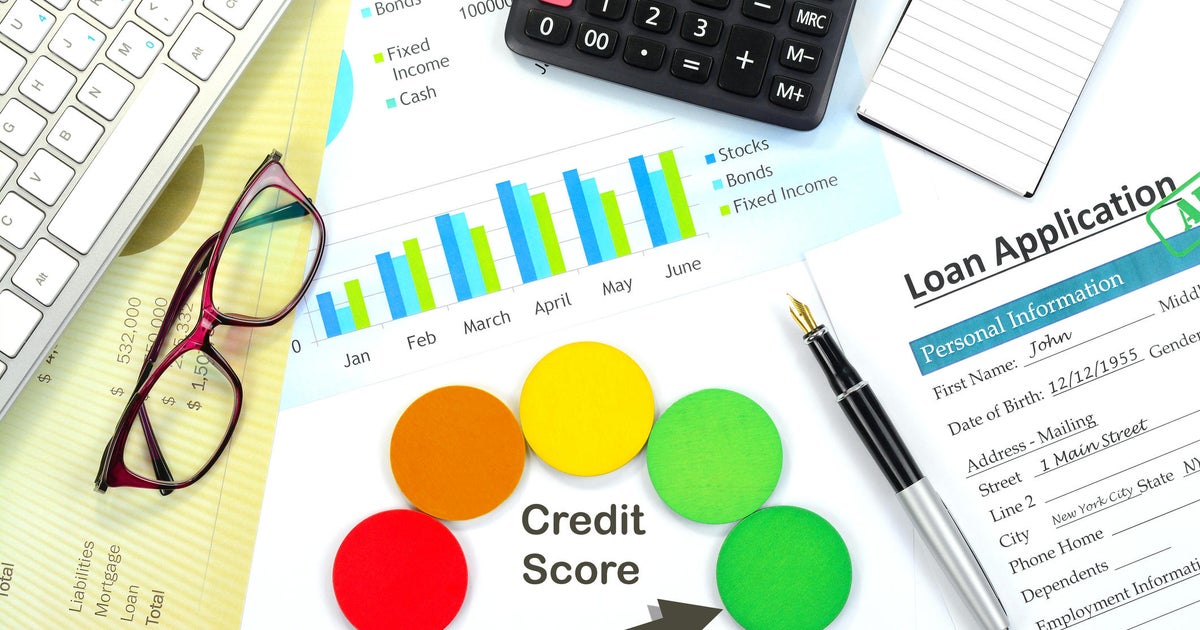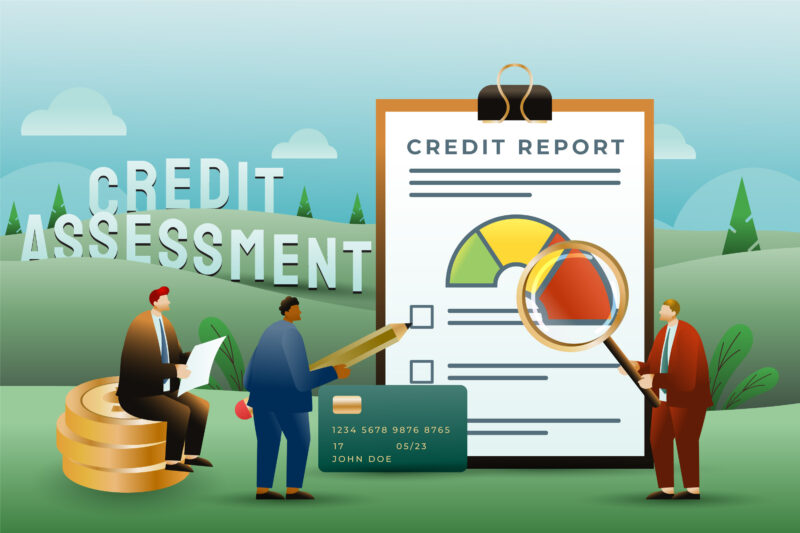Introduction

It’s one of those things most of us assume we’ve roughly under control: your credit score. You’ve heard of it, you know it matters — but you might not realise just how much damage a less-than-ideal score is doing behind the scenes. The truth is: your credit score is worse than you think — and it’s costing you more than you realise.
In this post, we’ll unpack why many people’s credit scores are lower than assumed, explore the hidden financial and lifestyle costs of having a weak score, detail how to assess your own situation, and offer clear next steps to regain control. It’s conversational, relatable and actionable — because a credit score isn’t just a number. It impacts your real life.
Why Leaving Your Comfort Zone Might Be the Best Financial Decision You Make This Year 1
Why many people underestimate their credit score problems
Let’s start with why you might believe your score is “fine”, when in fact it isn’t. Here are some reasons:
- You check a free score that isn’t the one lenders use. Many “free score” services use different models than what a bank or insurer uses for decisions.
- You see the number, but you don’t understand how it maps to actual cost. For example, a drop from one range to another can add thousands in interest. One article noted that Americans with scores of 620 or lower pay roughly $3,400 more per year in interest and insurance compared to those with higher scores. (CBS News)
- You assume “I’ll get approved anyway” so you focus on the approval and ignore the terms you’ll pay. The difference in interest rate matters big-time. (FINRA)
- You don’t realise how many areas use your credit score: not just loans, but insurance, renting, job checks, utilities. Lack of awareness means hidden costs stack up. (SkyPoint Federal Credit Union)
Because of these factors, you might indeed have a lower credit score than you think — or you might be paying far more than you realise simply because your score isn’t high enough.
What “your credit score is worse than you think” really means
When we say your credit score is worse than you think, we mean several things:
- Your actual score (in the model lenders use) is lower than you believe or assume.
- Because of that score, you’re paying higher interest rates, larger insurance premiums, less favourable borrowing terms.
- You’re losing opportunities (lower job offers, difficulty renting, fewer credit-card perks) because your credit profile is weak.
- You’re carrying hidden costs — not immediately obvious — that eat at your finances.
Let’s break it down further into cost categories.
Hidden costs of a weak credit score — you’ll feel these more than you think

Here are some of the major ways a weak credit score can cost you — often quietly.
1. Higher interest rates on loans
If you borrow money (car loan, mortgage, personal loan), a lower credit score means the lender sees you as higher risk. They compensate by charging higher rates. For example, one source shows that someone with a lower credit score (620-639) might pay interest that results in $66,000+ more over the life of a 30-year mortgage. (FINRA)
Did you know your credit score influences how much you pay for auto or home insurance? A recent report found homeowners with low credit scores pay nearly $2,000 more annually for home insurance compared to those with high scores. (Axios)
3. Fewer favourable credit products & higher cost of credit
You may still get approved for a credit card or loan, but you get access only to higher-interest products, fewer perks, higher fees. According to the Urban Institute, subprime borrowers ended up paying much more in interest for the same purchase than those with prime credit. (Urban Institute)
4. Missed employment/rental/utility opportunities
Credit scores aren’t just used by lenders. Some employers, landlords and utility providers check your credit history. Having a weak score may reduce your options or increase upfront costs (deposits, larger downpayments) that you might not think about day-to-day. (onlinegrad.syracuse.edu)
5. Reduced financial flexibility & increased vulnerability
When you’re paying more, getting less favourable terms, you have less buffer for emergencies, savings or investments. One spot-on summary: “Credit scores… influence many aspects of your life such as loan interest rates, car insurance premiums and housing options.” (comptroller.texas.gov)
6. Long-term cost compounding
Because the extra cost recurs — higher interest, higher insurance, higher fees — over years this adds up significantly. Estimates suggest people may pay hundreds of thousands more across a lifetime simply because their score was lower than they realised. (CBS News)
Comparison Table: Good Credit Score vs Weak Credit Score — effect on costs
Here’s a table to illustrate the difference in practical terms. Note this is illustrative–actual numbers vary by region and lender.
| Scenario | Good Credit Score (e.g., 740+) | Weaker Credit Score (e.g., 620-639) |
|---|---|---|
| 30-year mortgage on $200k | Interest rate ~3.3%, monthly ~$877 | Interest rate ~4.9%, monthly ~$1,061 |
| Difference in monthly | – | + ~$184/month |
| Annual extra cost | – | + ~$2,208 |
| Insurance premiums | Standard rate | + ~$2,000 +/year |
| Loan-access/credit-card terms | Best cards, lowest rates | Higher rate, fewer perks, larger fees |
| Flexibility/savings potential | More room to save/invest | Less room — more constrained |
The monthly difference might look manageable, but over years it becomes a major financial drag.
Why this matters even if you don’t plan to borrow soon
You might think: “I’m not planning a major loan, so I can ignore my credit score.” That’s a common mistake — and it’s why credit score troubles sneak up. Here’s why it still matters:
- You may unexpectedly need to borrow (car repair, medical bill, job change) and will face weak terms.
- Insurance, rental, utility costs still affected even if you’re not borrowing.
- Your credit score influences your “financial health,” which affects your ability to save, invest, build wealth.
- A weak score usually signals underlying issues (late payments, high utilisation, too much debt) which impact more than just borrowing.
- As interest rates and financial conditions change, what was manageable may become costly fast.
Thus, treating your credit score proactively matters even if a loan isn’t on the horizon. It’s not just about approvals—it’s about cost, options, strength and security.
How to find out if your credit score is worse than you think — and what to do
Here’s a step-by-step guide to assessing your situation and fixing it.
Step 1: Get your actual credit report & score
- Request the free credit report from each major bureau (in the U.S., via AnnualCreditReport.com or equivalent). (FINRA)
- Check what score lenders are using (FICO or other model) and what range you fall in.
- Note any errors, late payments, high utilisation, old debts in collections — these hurt your score.
Step 2: Understand what affects your credit score
The main factors (for many scoring models) include:
- Payment history (~35%)
- Amounts owed / credit utilisation (~30%)
- Length of credit history (~15%)
- Credit mix (~10%)
- New credit/inquiries (~10%) (FINRA)
Step 3: Identify red-flags in your profile
Look for:
- Late payments (30+ days) or any collection accounts.
- Credit card balances near or above 30-40% of limit.
- Many new credit applications recently.
- Accounts you rarely use but are open with high limits (leading to mis-utilisation).
- No checking of your report for errors.
Step 4: Create your repair & improvement plan
- Pay all bills on time — aim for 100% on-time payments.
- Reduce credit card balances — target utilisation under 30%.
- Don’t open unnecessary new accounts.
- Keep old accounts open if they have good history (length helps).
- Monitor your score/credit report periodically to catch errors and fraud.
- Consider locking in better terms: ask for better rates on cards, refinance loans if possible.
Step 5: Track your progress and appreciate the savings
Once you make improvements, you’re not just “helping your credit” — you’re potentially saving thousands. For instance, reducing rate by just 1% on a large loan can save you thousands over its term.
Reflect on: “If I had a higher score, what could I be saving each year?” That thinking can motivate consistent improvement.
Real-life scenario: how a “small” credit score gap cost big
Here’s a hypothetical based on real-data:
Imagine you’re taking a $200,000 mortgage. With a high credit score you unlock rate ~3.3% → monthly ~$877. With lower score you pay ~4.9% → monthly ~$1,061. That’s ~$184 extra/month → ~$2,208/year → ~$66,000 over 30 years. According to one analysis. (FINRA)
Now add: higher insurance premiums, higher borrowing costs on car/credit card, fewer perks. The sum compiles quickly.
What might seem “just a number” (your score being 620 vs 740) ends up costing real money, real savings, real opportunities. The difference between “I’ll pay a little more” and “I’ll just walk past that better deal” can shape your financial life.
Why many ignore this problem — and why ignoring it costs you
Why do people postpone dealing with their credit-score problems?
- They don’t know the full cost — it just feels “fine”.
- They believe if they’re approved for loans, their score must be okay.
- It feels abstract/unpleasant: “I’ll look at it later.”
- They focus on income or savings, without realising the “cost side” (interest+fees) can be just as big.
But ignoring it means: the drag continues, the opportunity cost builds, and you may keep paying more for years before realising what could have been.
Conclusion
If you’ve reached this point, you deserve to hear this clearly: Your credit score is worse than you think — and it’s costing you more than you realise. But relevantly, that’s good news — because if you realise it now, you still have time to fix it, to reduce cost, to improve your financial outcomes.
Here are your next steps:
- Pull your current credit report and score this week.
- Identify one big cost area you might be overpaying because of your score (loan, insurance, interest).
- Make one improvement in the next 30 days (pay down a card, dispute an error, set automated payments).
- Track how much you could save by having a stronger score — think of it as unlocked savings, not just repair.
A stronger credit score doesn’t just “look better” — it works better for you: lower payments, better access, more freedom. Don’t wait for tax-season or major life event to realise how much you’ve been overpaying. Start today. Because every point, every step, every improvement adds up. And the cost of ignoring this problem is far greater than the effort to fix it.




